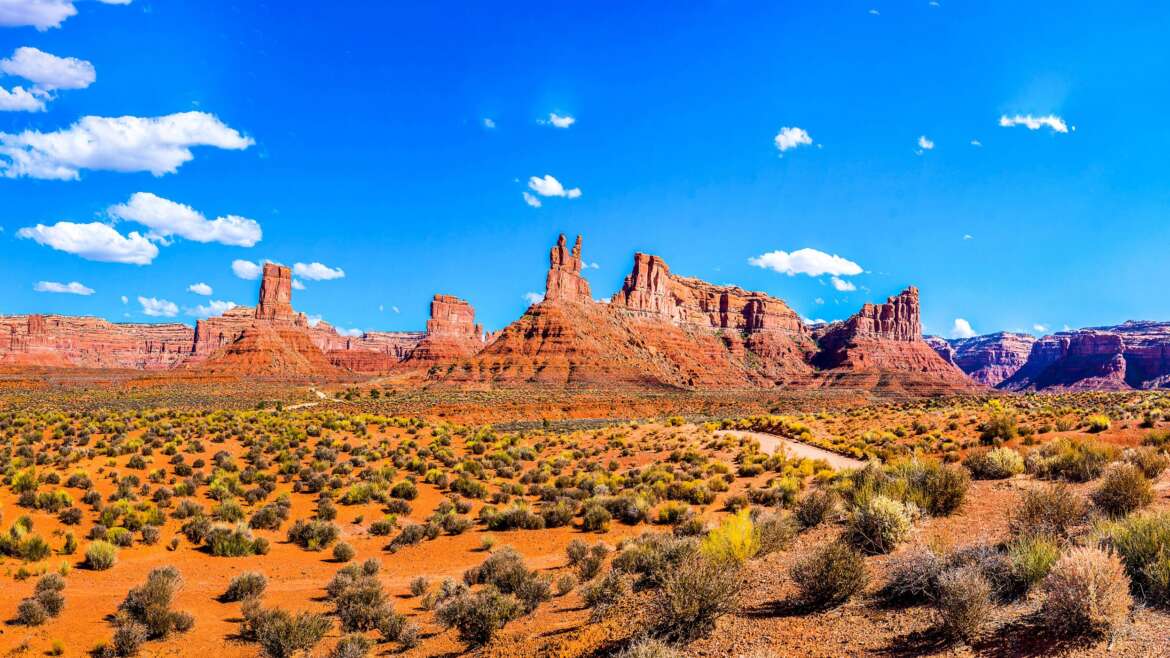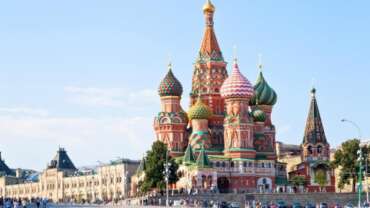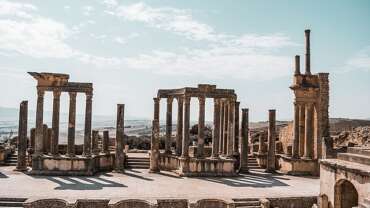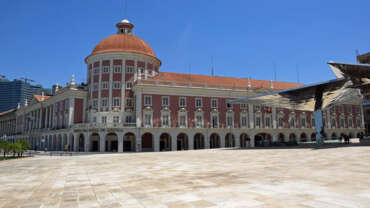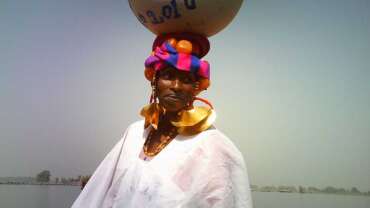USA - All within your reach!
The U.S. is a country of 50 states covering a vast swath of North America, with Alaska in the northwest and Hawaii extending the nation’s presence into the Pacific Ocean. Major Atlantic Coast cities are New York, a global finance and culture center, and capital Washington, DC. Midwestern metropolis Chicago is known for influential architecture and on the west coast, Los Angeles’ Hollywood is famed for filmmaking.
History of USA
The territory represented by the continental United States had, of course, been discovered, perhaps several times, before the voyages of Christopher Columbus. When Columbus arrived, he found the New World inhabited by peoples who in all likelihood had originally come from the continent of Asia. Probably these first inhabitants had arrived 20,000 to 35,000 years before in a series of migrations from Asia to North America by way of the Bering Strait. By the time the first Europeans appeared, the indigenous people (commonly referred to as Indians) had spread and occupied all portions of the New World.
The foods and other resources available in each physiographic region largely determined the type of culture prevailing there. Fish and sea mammals, for example, contributed the bulk of the food supply of coastal peoples, although the acorn was a staple for California Indians; plant life and wild game (especially the American bison, or buffalo) were sources for the Plains Indians; and small-game hunting and fishing (depending again on local resources) provided for Midwestern and Eastern American Indian groups. These foods were supplemented by corn (maize), which was a staple food for the Indians of the Southwest. The procurement of these foods called for the employment of fishing, hunting, plant and berry gathering, and farming techniques, the application of which depended, in turn, upon the food resources utilized in given areas.
Foods and other raw materials likewise conditioned the material culture of the respective regional groups. All Indians transported goods by human carrier; the use of dogs to pull sleds or travois was widespread; and rafts, boats, and canoes were used where water facilities were available. The horse, imported by the Spanish in the early 16th century, was quickly adopted by the Indians once it had made its appearance. Notably, it came to be used widely by the buffalo-hunting Indians of the Great Plains.
American Indian culture groups were distinguished, among other ways, by house types. Dome-shaped ice houses (igloos) were developed by the Eskimos (called Inuit in Canada) in what would become Alaska; rectangular plank houses were produced by the Northwest Coast Indians; earth and skin lodges and tepees, by plains and prairie tribes; flat-roofed and often multistoried houses, by some of the Pueblo Indians of the Southwest; and barrel houses, by the Northeast Indians. Clothing, or the lack of it, likewise varied with native groups, as did crafts, weapons, and tribal economic, social, and religious customs.
At the time of Columbus’s arrival there were probably roughly 1.5 million American Indians in what is now the continental United States, although estimates vary greatly. In order to assess the role and the impact of the American Indian upon the subsequent history of the United States in any meaningful way, one must understand the differentiating factors between Native American peoples, such as those mentioned above. Generally speaking, it may be said, however, that the American Indians as a whole exercised an important influence upon the civilization transplanted from Europe to the New World. Indian foods and herbs, articles of manufacture, methods of raising some crops, war techniques, words, a rich folklore, and ethnic infusions are among the more obvious general contributions of the Indians to their European conquerors. The protracted and brutal westward-moving conflict caused by “white” expansionism and Indian resistance constitutes one of the most tragic chapters in the history of the United States.
Colonial America to 1763
The European background
The English colonization of North America was but one chapter in the larger story of European expansion throughout the globe. The Portuguese, beginning with a voyage to Porto Santo off the coast of West Africa in 1418, were the first Europeans to promote overseas exploration and colonization. By 1487 the Portuguese had traveled all the way to the southern tip of Africa, establishing trading stations at Arguin, Sierra Leone, and El Mina. In 1497 Vasco da Gama rounded the Cape of Good Hope and sailed up the eastern coast of Africa, laying the groundwork for Portugal’s later commercial control of India. By 1500, when Pedro Álvares Cabral stumbled across the coast of Brazil en route to India, Portuguese influence had expanded to the New World as well.
Though initially lagging behind the Portuguese in the arts of navigation and exploration, the Spanish quickly closed that gap in the decades following Columbus’s voyages to America. First in the Caribbean and then in spectacular conquests of New Spain and Peru, they captured the imagination, and the envy, of the European world.
France, occupied with wars in Europe to preserve its own territorial integrity, was not able to devote as much time or effort to overseas expansion as did Spain and Portugal. Beginning in the early 16th century, however, French fishermen established an outpost in Newfoundland, and in 1534 Jacques Cartier began exploring the Gulf of St. Lawrence. By 1543 the French had ceased their efforts to colonize the northeast portion of the New World. In the last half of the 16th century, France attempted to found colonies in Florida and Brazil, but each of these efforts failed, and by the end of the century Spain and Portugal remained the only two European nations to have established successful colonies in America.
The English, although eager to duplicate the Spanish and Portuguese successes, nevertheless lagged far behind in their colonization efforts. The English possessed a theoretical claim to the North American mainland by dint of the 1497 voyage of John Cabot off the coast of Nova Scotia, but in fact they had neither the means nor the desire to back up that claim during the 16th century. Thus it was that England relied instead on private trading companies, which were interested principally in commercial rather than territorial expansion, to defend its interests in the expanding European world. The first of these commercial ventures began with the formation of the Muscovy Company in 1554. In 1576–78 the English mariner Martin Frobisher undertook three voyages in search of a Northwest Passage to the Far East. In 1577 Sir Francis Drake made his famous voyage around the world, plundering the western coast of South America en route. A year later Sir Humphrey Gilbert, one of the most dedicated of Elizabethan imperialists, began a series of ventures aimed at establishing permanent colonies in North America. All his efforts met with what was, at best, limited success. Finally, in September 1583, Gilbert, with five vessels and 260 men, disappeared in the North Atlantic. With the failure of Gilbert’s voyage, the English turned to a new man, Sir Walter Raleigh, and a new strategy—a southern rather than a northern route to North America—to advance England’s fortunes in the New World. Although Raleigh’s efforts to found a permanent colony off the coast of Virginia did finally fail with the mysterious destruction of the Roanoke Island colony in 1587, they awakened popular interest in a permanent colonizing venture.
During the years separating the failure of the Roanoke attempt and the establishment in 1607 of Jamestown colony, English propagandists worked hard to convince the public that a settlement in America would yield instant and easily exploitable wealth. Even men such as the English geographer Richard Hakluyt were not certain that the Spanish colonization experience could or should be imitated but hoped nevertheless that the English colonies in the New World would prove to be a source of immediate commercial gain. There were, of course, other motives for colonization. Some hoped to discover the much-sought-after route to the Orient (East Asia) in North America. English imperialists thought it necessary to settle in the New World in order to limit Spanish expansion. Once it was proved that America was a suitable place for settlement, some Englishmen would travel to those particular colonies that promised to free them from religious persecution. There were also Englishmen, primarily of lower- and middle-class origin, who hoped the New World would provide them with increased economic opportunity in the form of free or inexpensive land. These last two motives, while they have been given considerable attention by historians, appear not to have been so much original motives for English colonization as they were shifts of attitude once colonization had begun.
People of USA
A country for less than two and a half centuries, the United States is a relatively new member of the global community, but its rapid growth since the 18th century is unparalleled. The early promise of the New World as a refuge and land of opportunity was realized dramatically in the 20th century with the emergence of the United States as a world power. With a total population exceeded only by those of China and India, the United States is also characterized by an extraordinary diversity in ethnic and racial ancestry. A steady stream of immigration, notably from the 1830s onward, formed a pool of foreign-born persons unmatched by any other nation; 60 million people immigrated to U.S. shores in the 18th and 19th centuries. Many were driven, seeking escape from political or economic hardship, while others were drawn, by a demand for workers, abundant natural resources, and expansive cheap land. Most arrived hoping to remake themselves in the New World.
Americans also have migrated internally with great vigour, exhibiting a restlessness that thrived in the open lands and on the frontier. Initially, migratory patterns ran east to west and from rural areas to cities, then, in the 20th century, from the South to the Northeast and Midwest. Since the 1950s, though, movement has been primarily from the cities to outlying suburbs and from aging northern metropolises to the growing urban agglomerations of the South, Southwest, and West.
At the dawn of the 21st century, the majority of the U.S. population had achieved a high level of material comfort, prosperity, and security. Nonetheless, Americans struggled with the unexpected problems of relative affluence, as well as the persistence of residual poverty. Crime, drug abuse, affordable energy sources, urban sprawl, voter apathy, pollution, high divorce rates, AIDS, and excessive litigation remained continuing subjects of concern, as were inequities and inadequacies in education and managed health care. Among the public policy issues widely debated were abortion, gun control, welfare reforms, and capital punishment.
Many Americans perceive social tension as the product of their society’s failure to extend the traditional dream of equality of opportunity to all people. Ideally, social, political, economic, and religious freedom would assure the like treatment of everyone, so that all could achieve goals in accord with their individual talents, if only they worked hard enough. This strongly held belief has united Americans throughout the centuries. The fact that some groups have not achieved full equality troubles citizens and policy-makers alike.
Cultural Life of USA
The great art historian Sir Ernst Hans Josef Gombrich once wrote that there is really no such thing as “art”; there are only artists. This is a useful reminder to anyone studying, much less setting out to try to define, anything as big and varied as the culture of the United States. For the culture that endures in any country is made not by vast impersonal forces or by unfolding historical necessities but by uniquely talented men and women, one-of-a-kind people doing one thing at a time—doing what they can, or must. In the United States, particularly, where there is no more a truly “established” art than an established religion—no real academies, no real official art—culture is where one finds it, and many of the most gifted artists have chosen to make their art far from the parades and rallies of worldly life.
Some of the keenest students of the American arts have even come to dislike the word culture as a catchall for the plastic and literary arts, since it is a term borrowed from anthropology, with its implication that there is any kind of seamless unity to the things that writers and poets and painters have made. The art of some of the greatest American artists and writers, after all, has been made in deliberate seclusion and has taken as its material the interior life of the mind and heart that shapes and precedes shared “national” experience. It is American art before it is the culture of the United States. Even if it is true that these habits of retreat are, in turn, themselves in part traditions, and culturally shaped, it is also true that the least illuminating way to approach the poems of Emily Dickinson or the paintings of Winslow Homer, to take only two imposing instances, is as the consequence of large-scale mass sociological phenomenon.
Still, many, perhaps even most, American culture makers have not only found themselves, as all Americans do, caught in the common life of their country—they have chosen to make the common catch their common subject. Their involvement with the problems they share with their neighbours, near and far, has given their art a common shape and often a common substance. And if one quarrel has absorbed American artists and thinkers more than any other, it has been that one between the values of a mass, democratic, popular culture and those of a refined elite culture accessible only to the few—the quarrel between “low” and “high.” From the very beginnings of American art, the “top down” model of all European civilization, with a fine art made for an elite class of patrons by a specialized class of artists, was in doubt, in part because many Americans did not want that kind of art, in part because, even if they wanted it, the social institutions—a court or a cathedral—just were not there to produce and welcome it. What came in its place was a commercial culture, a marketplace of the arts, which sometimes degraded art into mere commerce and at other times raised the common voice of the people to the level of high art.
In the 20th century, this was, in some part, a problem that science left on the doorstep of the arts. Beginning at the turn of the century, the growth of the technology of mass communications—the movies, the phonograph, radio, and eventually television—created a potential audience for stories and music and theatre larger than anyone could previously have dreamed that made it possible for music and drama and pictures to reach more people than had ever been possible. People in San Francisco could look at the latest pictures or hear the latest music from New York City months, or even moments, after they were made; a great performance demanded a pilgrimage no longer than the path to a corner movie theatre. High culture had come to the American living room.
But, though interest in a “democratic” culture that could compete with traditional high culture has grown in recent times, it is hardly a new preoccupation. One has only to read such 19th-century classics as Mark Twain’s The Innocents Abroad (1869) to be reminded of just how long, and just how keenly, Americans have asked themselves if all the stained glass and sacred music of European culture is all it is cracked up to be, and if the tall tales and Cigar-Store Indians did not have more juice and life in them for a new people in a new land. Twain’s whole example, after all, was to show that American speech as it was actually spoken was closer to Homer than imported finery was.
In this way, the new machines of mass reproduction and diffusion that fill modern times, from the daguerreotype to the World Wide Web, came not simply as a new or threatening force but also as the fulfillment of a standing American dream. Mass culture seemed to promise a democratic culture: a cultural life directed not to an aristocracy but to all men and women. It was not that the new machines produced new ideals but that the new machines made the old dreams seem suddenly a practical possibility.
The practical appearance of this dream began in a spirit of hope. Much American art at the turn of the 20th century and through the 1920s, from the paintings of Charles Sheeler to the poetry of Hart Crane, hymned the power of the new technology and the dream of a common culture. By the middle of the century, however, many people recoiled in dismay at what had happened to the American arts, high and low, and thought that these old dreams of a common, unifying culture had been irrevocably crushed. The new technology of mass communications, for the most part, seemed to have achieved not a generous democratization but a bland homogenization of culture. Many people thought that the control of culture had passed into the hands of advertisers, people who used the means of a common culture just to make a buck. It was not only that most of the new music and drama that had been made for movies and radio, and later for television, seemed shallow; it was also that the high or serious culture that had become available through the means of mass reproduction seemed to have been reduced to a string of popularized hits, which concealed the real complexity of art. Culture, made democratic, had become too easy.
As a consequence, many intellectuals and artists around the end of World War II began to try to construct new kinds of elite “high” culture, art that would be deliberately difficult—and to many people it seemed that this new work was merely difficult. Much of the new art and dance seemed puzzling and deliberately obscure. Difficult art happened, above all, in New York City. During World War II, New York had seen an influx of avant-garde artists escaping Adolf Hitler’s Europe, including the painters Max Ernst, Piet Mondrian, and Joan Miró, as well as the composer Igor Stravinsky. They imported many of the ideals of the European avant-garde, particularly the belief that art should always be difficult and “ahead of its time.” (It is a paradox that the avant-garde movement in Europe had begun, in the late 19th century, in rebellion against what its advocates thought were the oppressive and stifling standards of high, official culture in Europe and that it had often looked to American mass culture for inspiration.) In the United States, however, the practice of avant-garde art became a way for artists and intellectuals to isolate themselves from what they thought was the cheapening of standards.
And yet this counterculture had, by the 1960s, become in large American cities an official culture of its own. For many intellectuals around 1960, this gloomy situation seemed to be all too permanent. One could choose between an undemanding low culture and an austere but isolated high culture. For much of the century, scholars of culture saw these two worlds—the public world of popular culture and the private world of modern art—as irreconcilable antagonists and thought that American culture was defined by the abyss between them.
As the century and its obsessions closed, however, more and more scholars came to see in the most enduring inventions of American culture patterns of cyclical renewal between high and low. And as scholars have studied particular cases instead of abstract ideas, it has become apparent that the contrast between high and low has often been overdrawn. Instead of a simple opposition between popular culture and elite culture, it is possible to recognize in the prolix and varied forms of popular culture innovations and inspirations that have enlivened the most original high American culture—and to then see how the inventions of high culture circulate back into the street, in a spiraling, creative flow. In the astonishing achievements of the American jazz musicians, who took the popular songs of Tin Pan Alley and the Broadway musical and inflected them with their own improvisational genius; in the works of great choreographers like Paul Taylor and George Balanchine, who found in tap dances and marches and ballroom bebop new kinds of movement that they then incorporated into the language of high dance; in the “dream boxes” of the American avant-garde artist Joseph Cornell, who took for his material the mundane goods of Woolworth’s and the department store and used them as private symbols in surreal dioramas: in the work of all of these artists, and so many more, we see the same kind of inspiring dialogue between the austere discipline of avant-garde art and the enlivening touch of the vernacular.
This argument has been so widely resolved, in fact, that, in the decades bracketing the turn of the 21st century, the old central and shaping American debate between high and low has been in part replaced by a new and, for the moment, still more clamorous argument. It might be said that if the old debate was between high and low, this one is between the “centre” and the “margins.” The argument between high and low was what gave the modern era its special savour. A new generation of critics and artists, defining themselves as “postmodern,” have argued passionately that the real central issue of culture is the “construction” of cultural values, whether high or low, and that these values reflect less enduring truth and beauty, or even authentic popular taste, than the prejudices of professors. Since culture has mostly been made by white males praising dead white males to other white males in classrooms, they argue, the resulting view of American culture has been made unduly pale, masculine, and lifeless. It is not only the art of African Americans and other minorities that has been unfairly excluded from the canon of what is read, seen, and taught, these scholars argue, often with more passion than evidence; it is also the work of anonymous artists, particularly women, that has been “marginalized” or treated as trivial. This argument can conclude with a rational, undeniable demand that more attention be paid to obscure and neglected writers and artists, or it can take the strong and often irrational form that all aesthetic values are merely prejudices enforced by power. If the old debate between high and low asked if real values could rise from humble beginnings, the new debate about American culture asks if true value, as opposed to mere power, exists at all.
Explore New Mexico’s caves and caverns

Marvel at the magnificence of volcanic activity that created some cave sites, and check out others carved deep into stone by ancient cultures using primitive tools. The wonders of New Mexico’s caves and caverns can be appreciated equally by those eager for an easy trek underground or adventurers who welcome vigorous hikes to remote locales. While the jewels in these places are the caves, you’ll equally enjoy wandering the landscapes above ground and visiting nearby towns.



